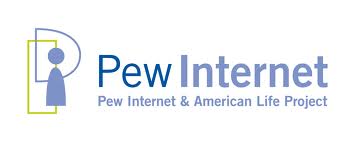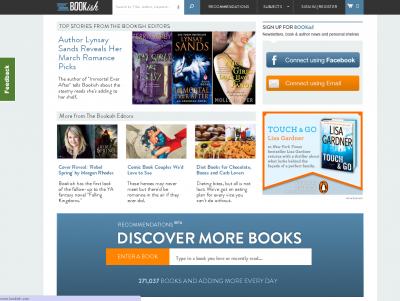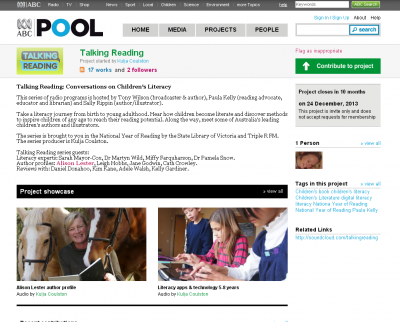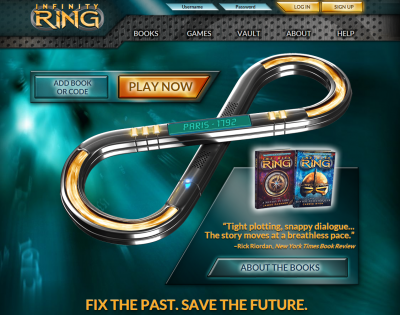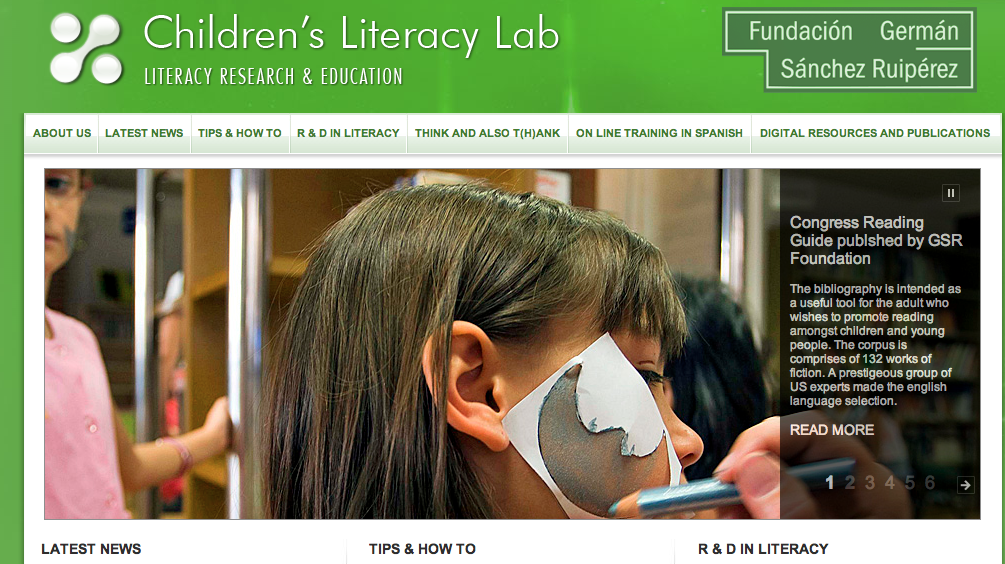 Congratulations to Melbourne High School Head of Library, Pam Saunders, recipient of the 2014 Dromkeen Librarian’s Award presented at the State Library of Victoria (SLV) on 12 October. The award ‘is presented to a teacher, a teacher librarian or a children’s librarian, working within or outside the education system, in recognition of the important role played by this person in introducing young people to literature and encouraging an enjoyment and love of reading.’
Congratulations to Melbourne High School Head of Library, Pam Saunders, recipient of the 2014 Dromkeen Librarian’s Award presented at the State Library of Victoria (SLV) on 12 October. The award ‘is presented to a teacher, a teacher librarian or a children’s librarian, working within or outside the education system, in recognition of the important role played by this person in introducing young people to literature and encouraging an enjoyment and love of reading.’ 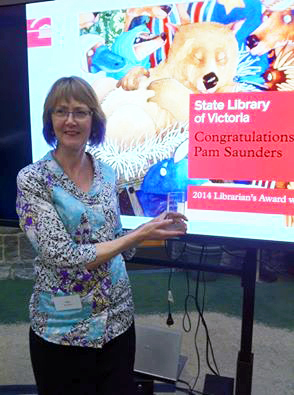 Pam has a long involvement with libraries and adolescent reading having previously worked as a librarian in schools and public libraries, as well as managing the Centre for Youth Literature at the SLV. In her interview with Tania Scheko, teacher librarian, she speaks of the development of her love affair with reading, saying..
Pam has a long involvement with libraries and adolescent reading having previously worked as a librarian in schools and public libraries, as well as managing the Centre for Youth Literature at the SLV. In her interview with Tania Scheko, teacher librarian, she speaks of the development of her love affair with reading, saying..
I was fortunate to have become a reader on the lap of my father as he read to me. I remember walking as a very young child to the shop to buy the new magazine Playhour and then my father reading it to me, especially the comics. This was further fostered by a dynamic school librarian, Mrs Cecilia Stubbs, who ran the library at Burnie High School in the 1970s. She encouraged students to use the library, to be involved and, best of all, she challenged my reading, pushing me to read titles which I would not have discovered myself. Titles like Black like me by John Griffin. I hope I have emulated her as a librarian.
Pam’s award shines a spotlight on the role of library staff in the development of a culture of reading within the school and individual students. We know that to instil a love of reading is to give a student the passport to seeing the world through a different set of eyes. At the forthcoming School Library Assoc of Victoria (SLAV) conference to be held 21 November, author Leigh Hobbs and others will explore the importance of the school library, and the primary school in particular, in “Building Community Through Reading”. Reading is a skill for life. Congratulations Pam, you and others like you in our libraries are a positive influence on our students’ futures.
The Dromkeen Medal, this year awarded to esteemed editor and publisher, Helen Chamberlin, and Dromkeen Librarian’s Award have a distinguished history of over 32 years, with previous Medal recipients including well-known children’s book illustrators and authors such as Shaun Tan, Bronwyn Bancroft, Roland Harvey, Ruth Park and Graeme Base.


